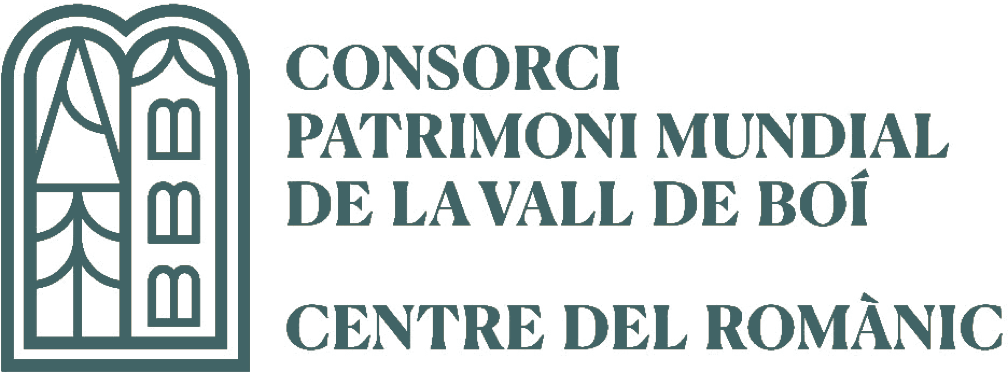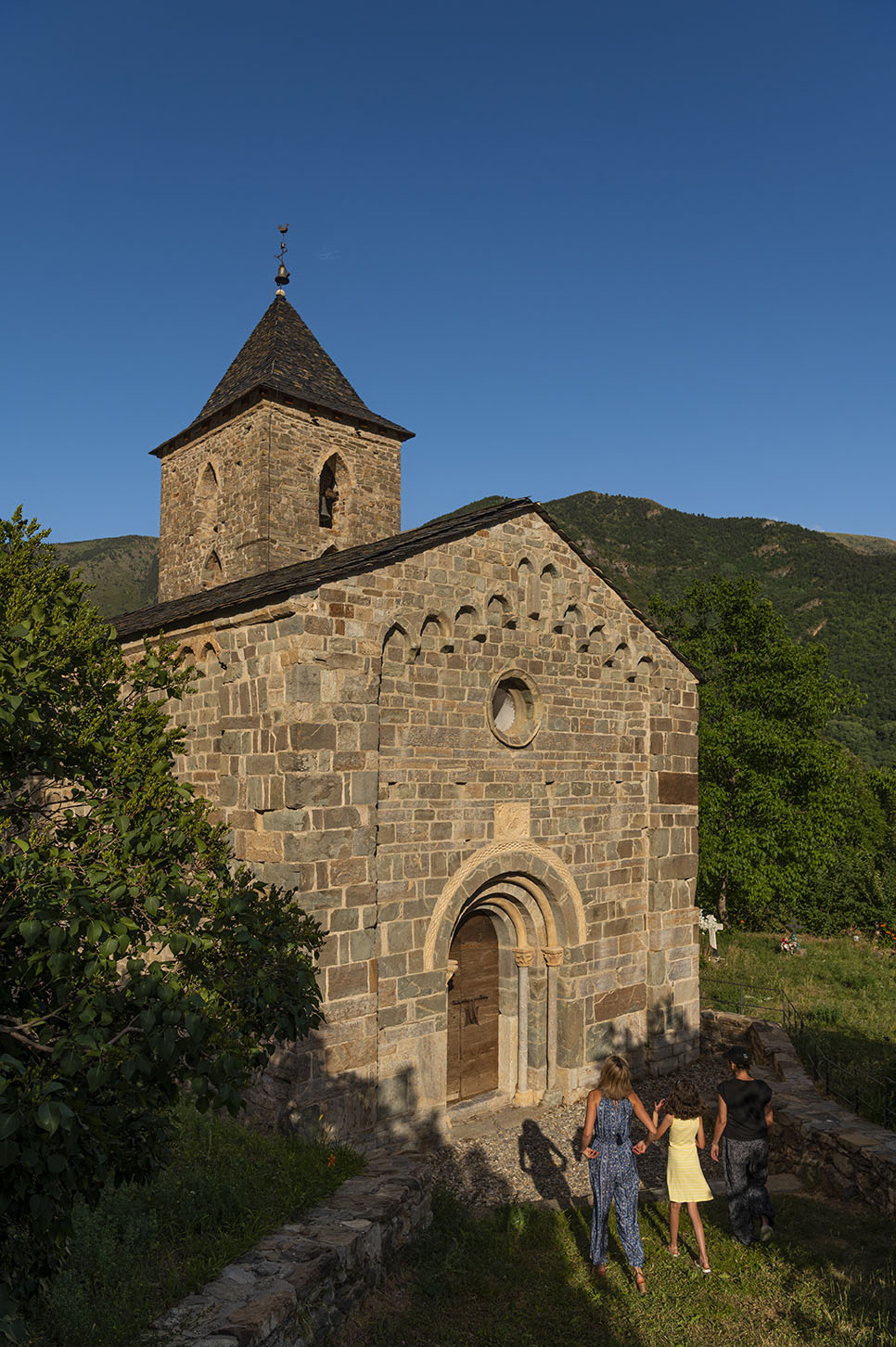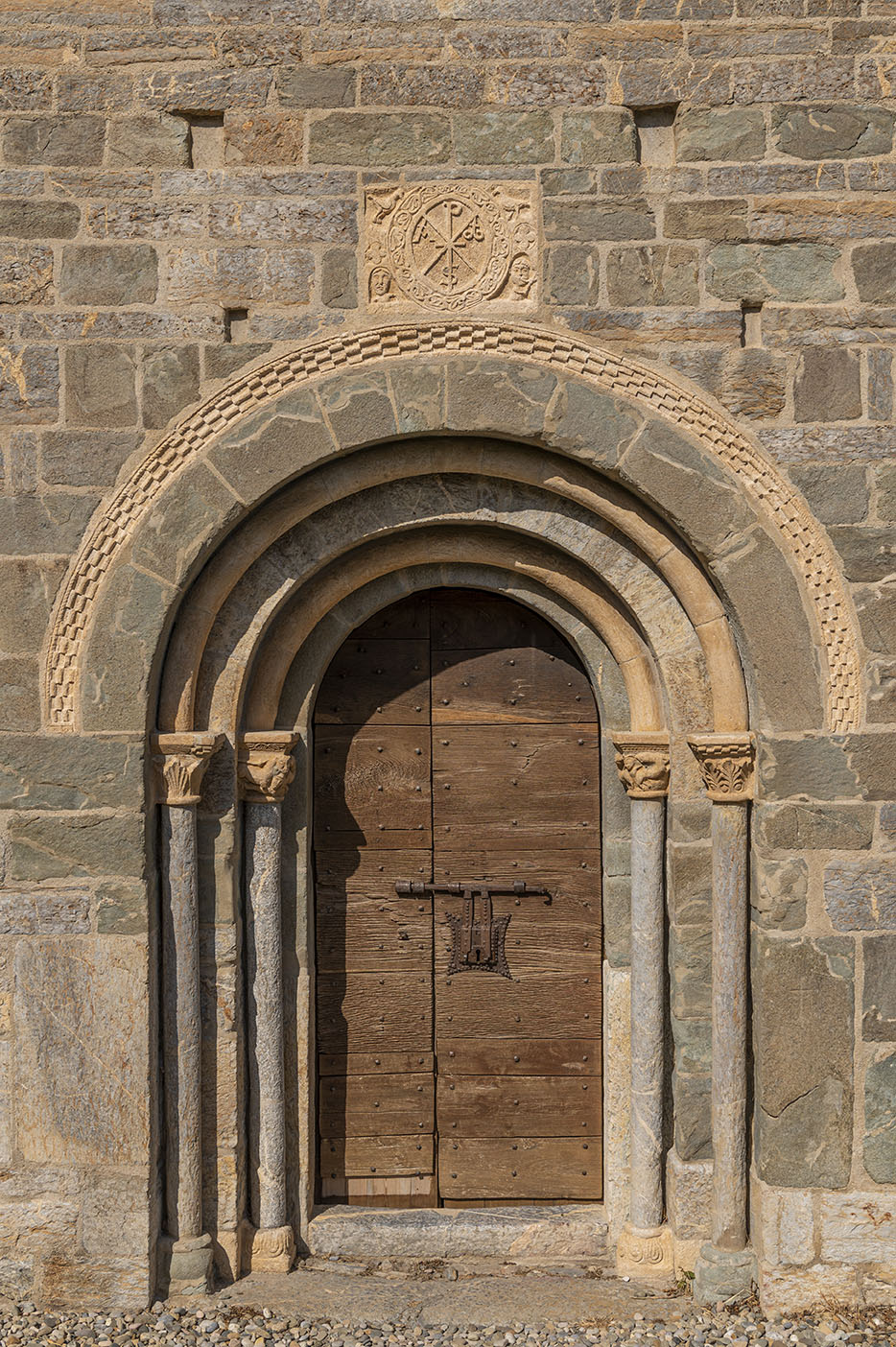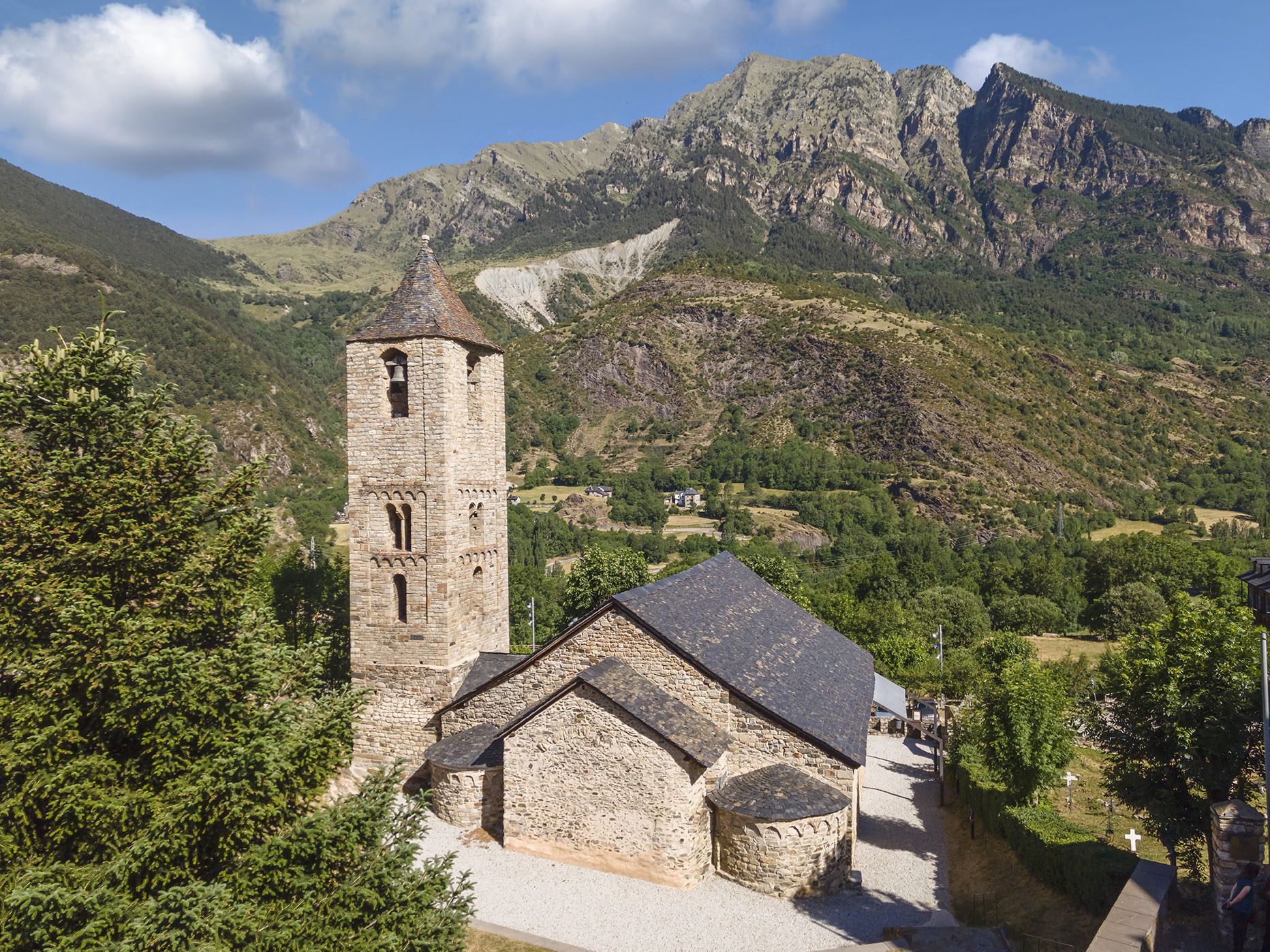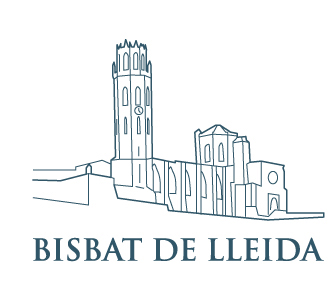The Church of L’Assumpció de Cóll has its own characteristics that distinguish it from the other churches in the valley: the construction materials, the size of the ashlars and the decorative elements on the façade, the most interesting part of the church. To highlight the Chrismon and the sculpted capitals with depictions of fights between men and animals. As in the other churches in the valley, guarding the entrance to the temple you’ll find a Romanesque wrought iron-bolt with the pin finished with an animal head. The three Romanesque fonts are still preserved inside the church: the baptismal font, the holy water font and the oil font.
